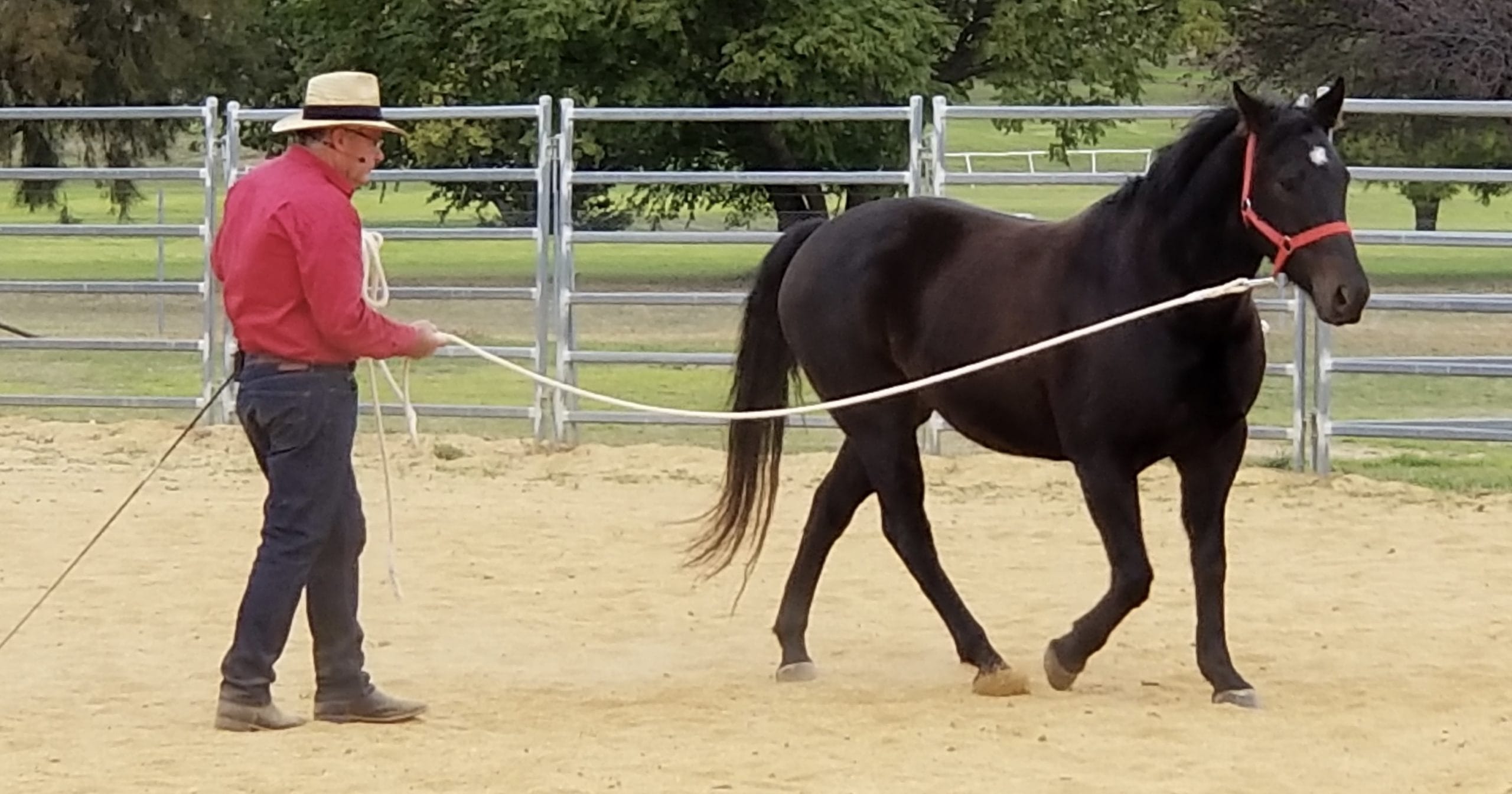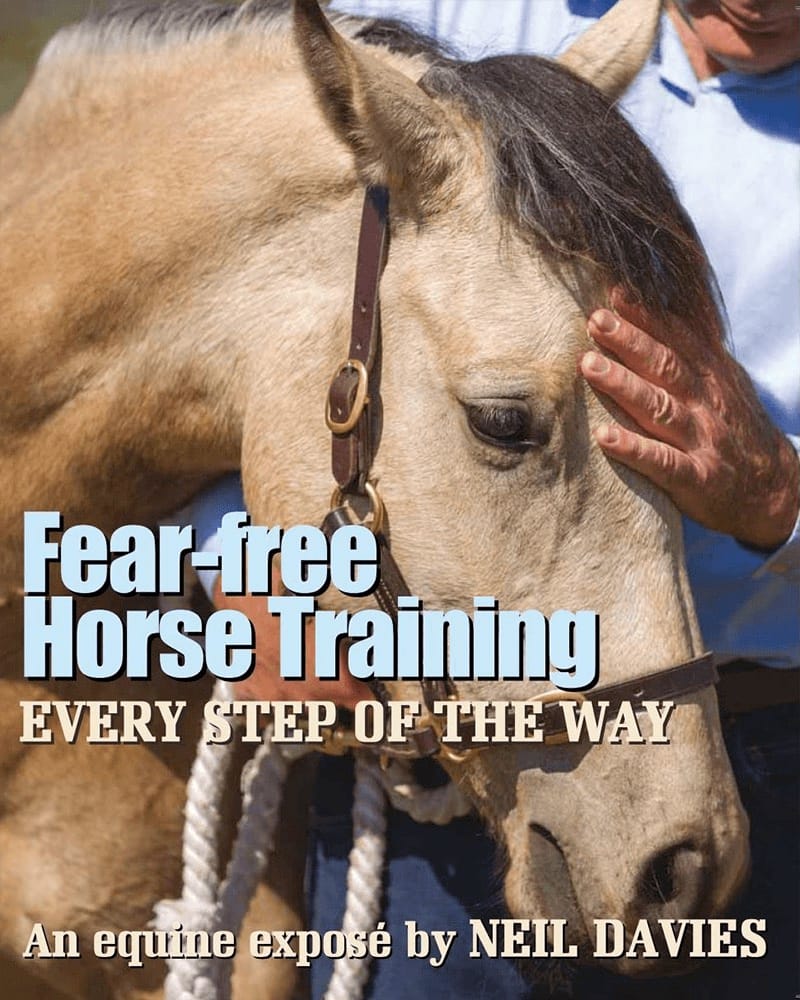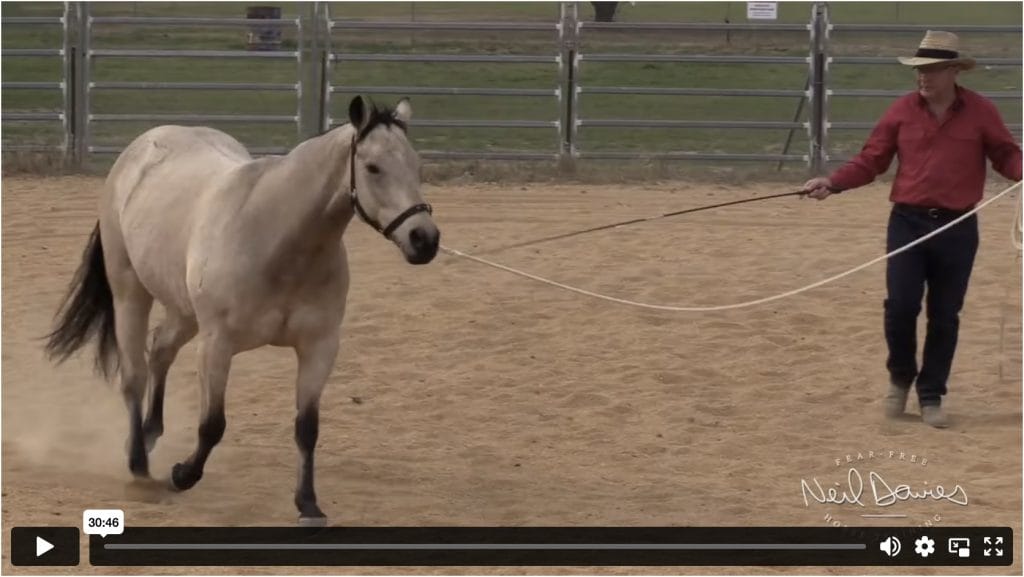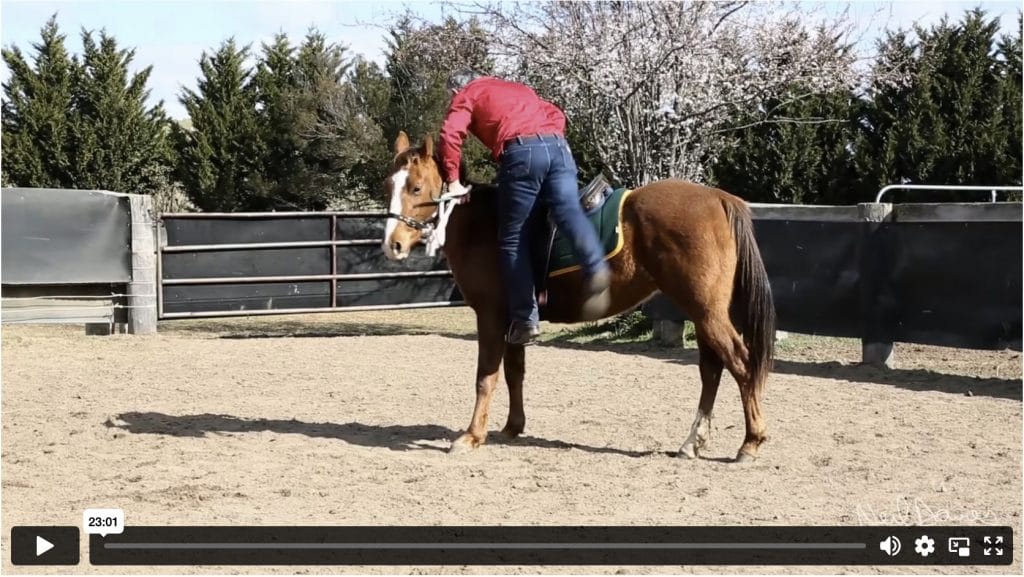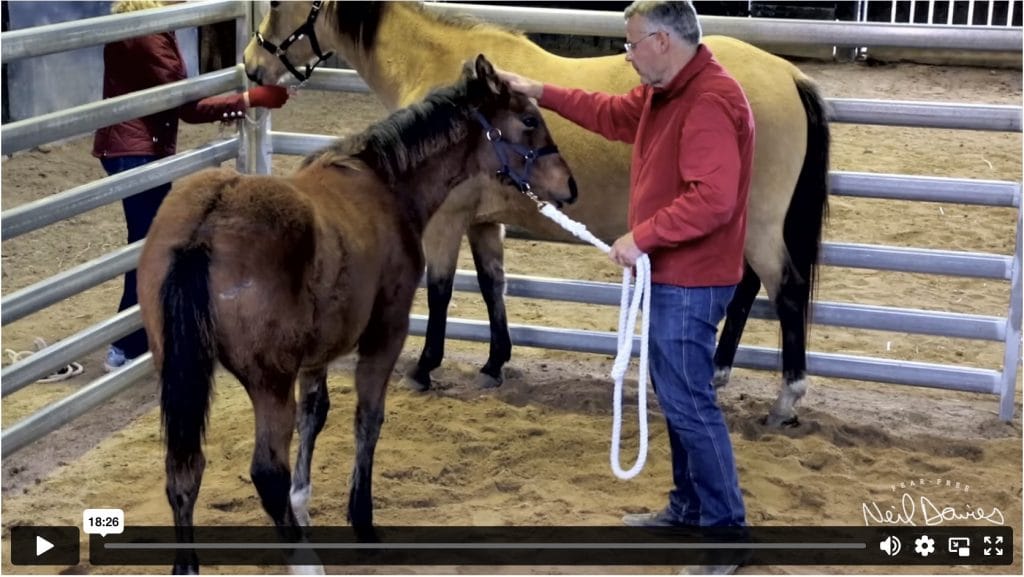Most horse training is based on pressure and relief.
Everyone uses pressure and relief in some way shape or form, even those who say they don’t.
Pressure can be described as anything that a horse finds uncomfortable or unpleasant or worrying.
No matter how slight the discomfort, unpleasantness or worry may be, it’s still pressure.
Here are some examples of horses being under pressure:
An unhandled horse is under pressure when he’s first approached because he finds it worrying to be near a human.
When the horse steps away, the pressure is relieved because the frightening human is no longer near him.
When you sit on a horse’s back for the first time, he’s under pressure because he’s worried by having someone on his back.
The pressure is relieved when the rider dismounts.
When you rub your hand on a horse’s leg for the first time, he’s under pressure because he’s worried by having your hand in this new position.
The pressure is relieved when you take your hand away from the horse’s leg.
When you ride your horse and pull on the reins –no matter how lightly –
your horse is under pressure because he finds it unpleasant to have the bit pulling against his mouth or the halter pulling against his nose.
The pressure is relieved when you give with the reins.
When you squeeze your legs onto your horse, he’s under pressure because he finds this unpleasant.
The pressure is relieved when you remove your legs from the horse’s side.
When you ask your horse to step forward by pulling on the lead, he’s under pressure because he finds the halter pulling against him unpleasant.
The pressure is relieved when he steps forward.
As you can see by these examples, applying pressure to your horse doesn’t mean that you’re being cruel.
Pressure can sometimes be the lightest touch or the smallest squeeze.
How to use pressure and relief is explained throughout my book
Those who think they don’t use pressure to train their horses need to think again.
You’re applying pressure every time you pull the lead, touch the reins or use your seat and legs.
There must always be a simple and logical way for your horse to relieve pressure, otherwise he’ll become confused and nervous and worried.
Your horse must always understand how to relieve any pressure before it’s applied.
This is the key to making sure that your horse stays relaxed and confident.
Many trainers apply pressure when the horse has no idea how to find relief.
One of the most common examples of this is when a horse is chased without understanding why.
The trainer wants the horse to stand and face him but the horse has no idea of this.
Pressure is applied when the trainer chases the horse.
We know that the way for the horse to relieve that pressure is to stop and face the trainer.
However, the horse has no idea of what to do, so he’s chased and frightened until he finally flukes the answer.
So-called ‘desensitisation’ is another example of pressure being applied when horses have no idea how to find relief.
Horses are under pressure when flags and tarps are flapped around.
Whether the horse stands, moves or rushes away, the trainer keeps flapping.
There’s no logical way for the poor horse to relieve the pressure of the continuous flapping.
People argue that desensitisation and habituation are different processes to the use of pressure and relief but guess what?
No-one told the poor horses this.
As far as a horse is concerned, he’s under pressure every time something is flapped around because he finds it frightening and unpleasant and he wants it to stop.
Unfortunately, there’s no logical way for the poor horse to make the flapping stop.
The flapping continues whether he stands, moves or rushes away.
Whenever you work with your horse, you must always use the least amount of pressure to achieve your desired response.
Always start with the smallest amount of pressure and increase it slightly until your horse responds.
And always remember, if your horse doesn’t respond as you wish, it’s not his fault.
When a horse understands how to relieve pressure, he’ll do it every time.

